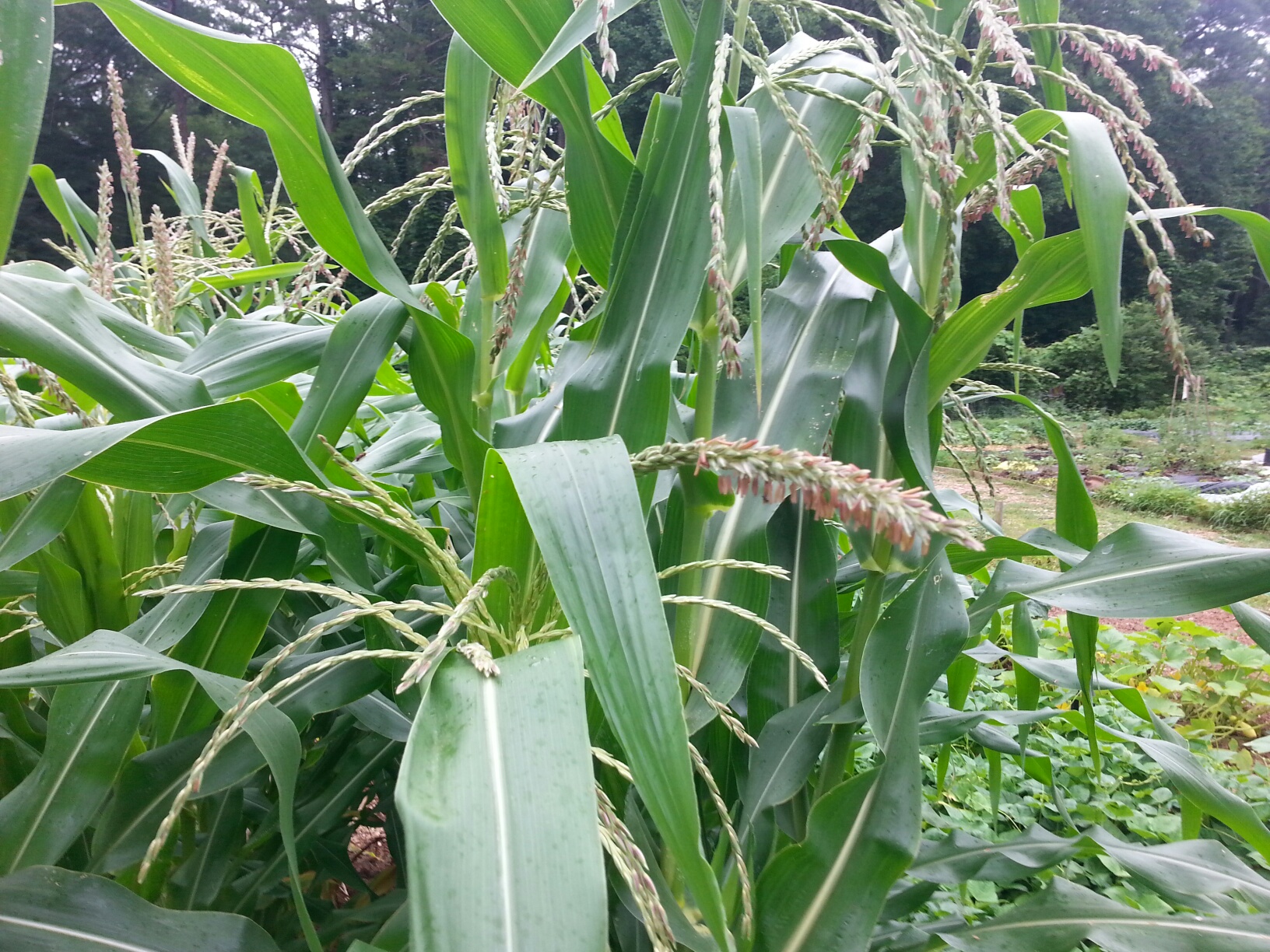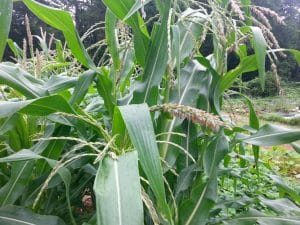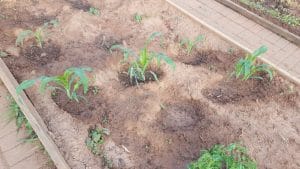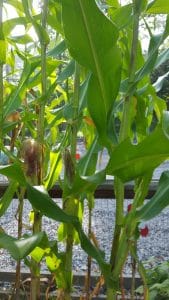Today we continue our series on a good replacement for tomatoes in our summer community garden plots. Today’s crop to consider is corn.
Usually corn is avoided in the community garden. The tall stalks shade other plants, there is not much yield in the amount you can grow in a small space, and corn takes a large amount of water. That being said, I sometimes find community gardeners who really want to grow their own corn. They remember eating corn fresh from a grandparent’s farm or working the corn patch with their parents. Often these gardeners are now city dwellers and the corn means a great deal to them.
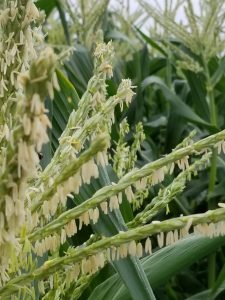
Instead of totally abandoning the idea of growing corn, why not think about trying some of the short growing varieties? Several of the seed companies offer shorter varieties. Burpee advertises a corn for growing in a patio container called On-Deck Hybrid. The description of this type states that it grows 4 – 5 feet high. Compare that to Silver Queen which stretches 8 feet tall.
Park Seed offers a shorter variety called Early Sunglow Hybrid. Stalks from this corn are expected to top at 4 feet. Another thought is popcorn. Seed Savers offers Tom Thumb popcorn which grows only 3-4 feet tall. I have grown popcorn many times. It is fun to grow and fun to pop with children or grandchildren.
I will caution you that more than a few stalks need to be grown to get any kind of yield. Many stalks yield 1-2 corn ears per plant. If you are serious about trying corn in the community garden consider allocating at least half of your 4’X 8′ garden bed for the crop. Also, remember that the crop is wind pollinated. It does not hurt to shake those corn tassels yourself to make sure the pollen moves around.
Happy Gardening!
